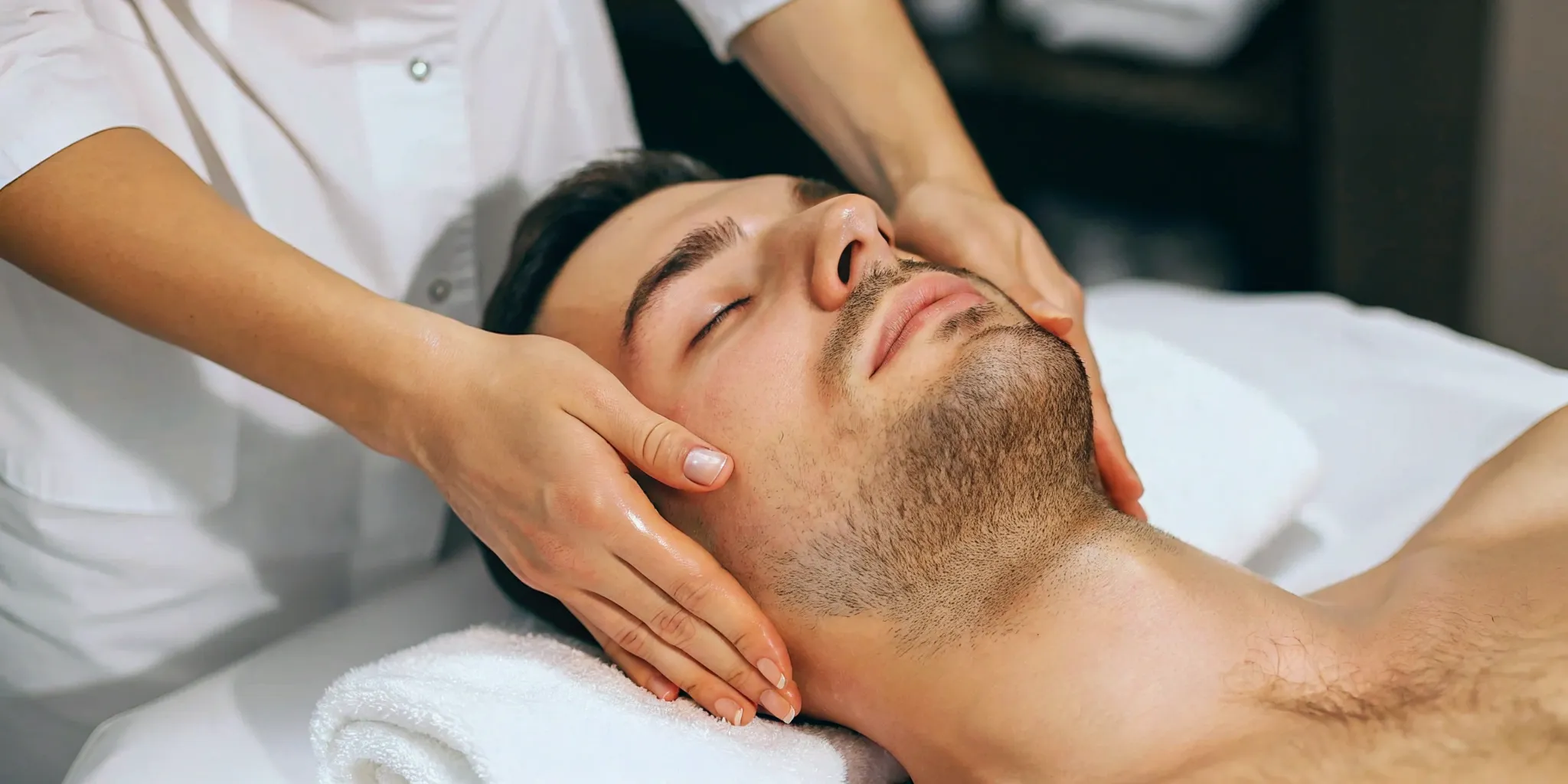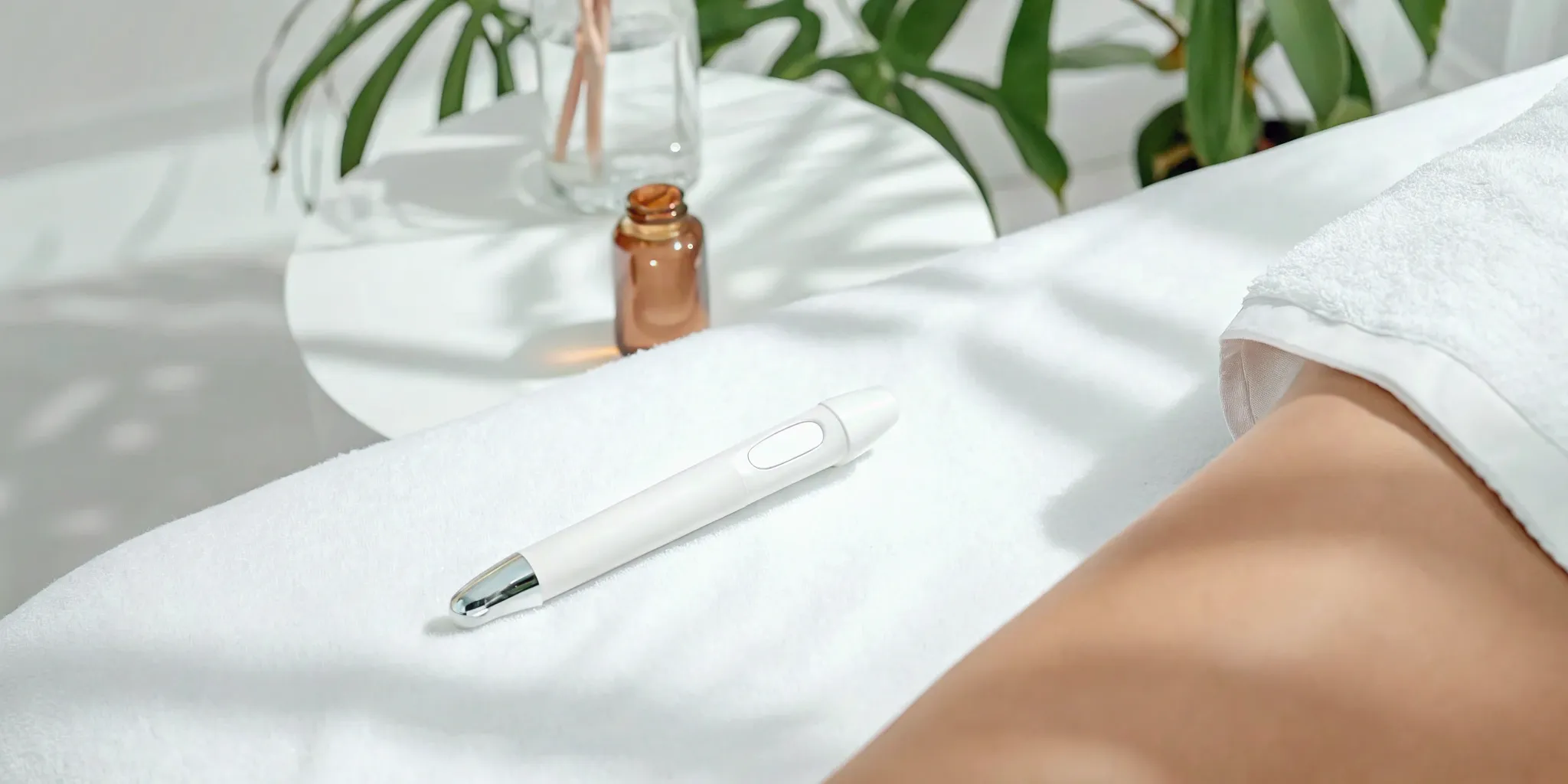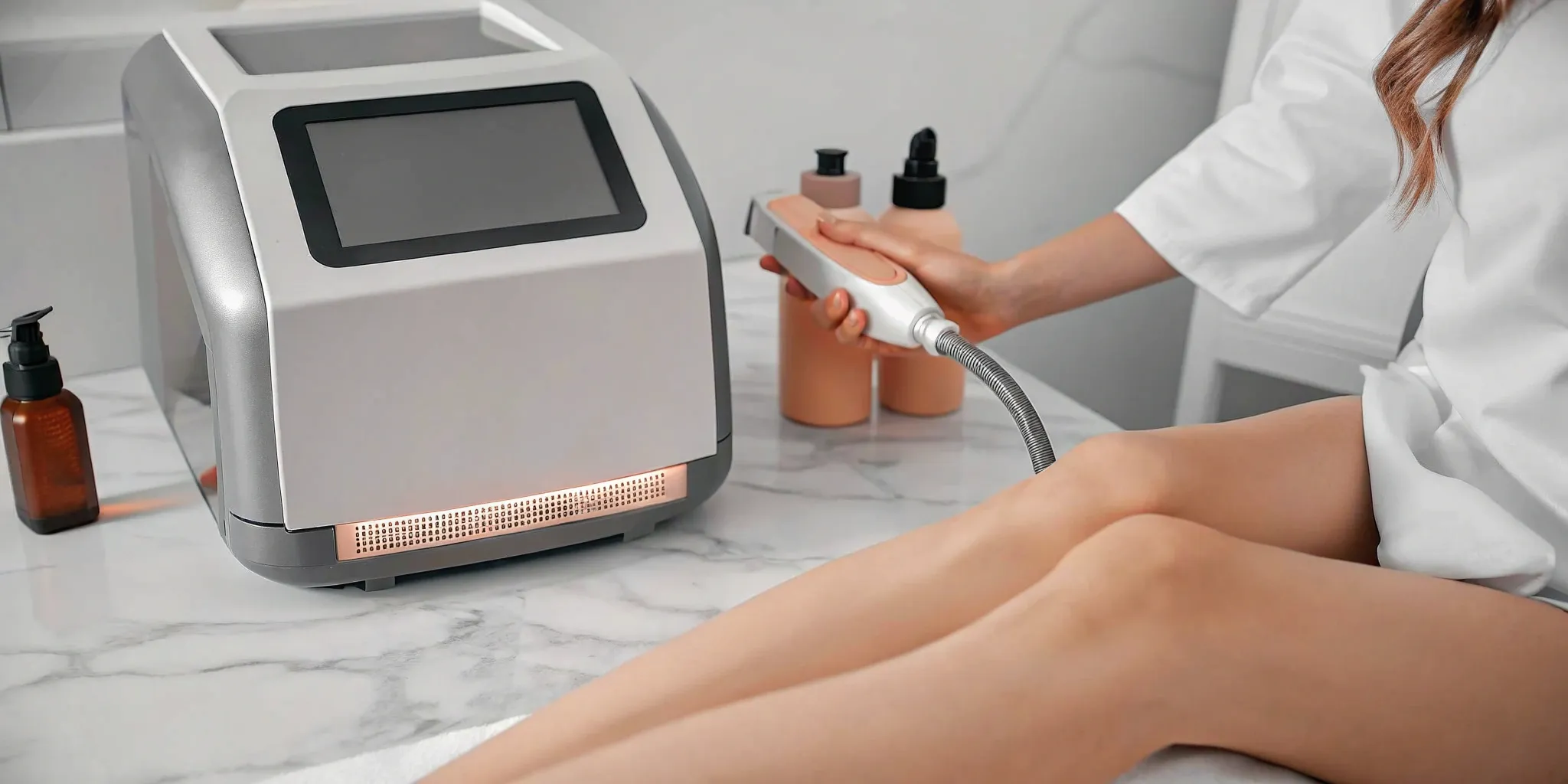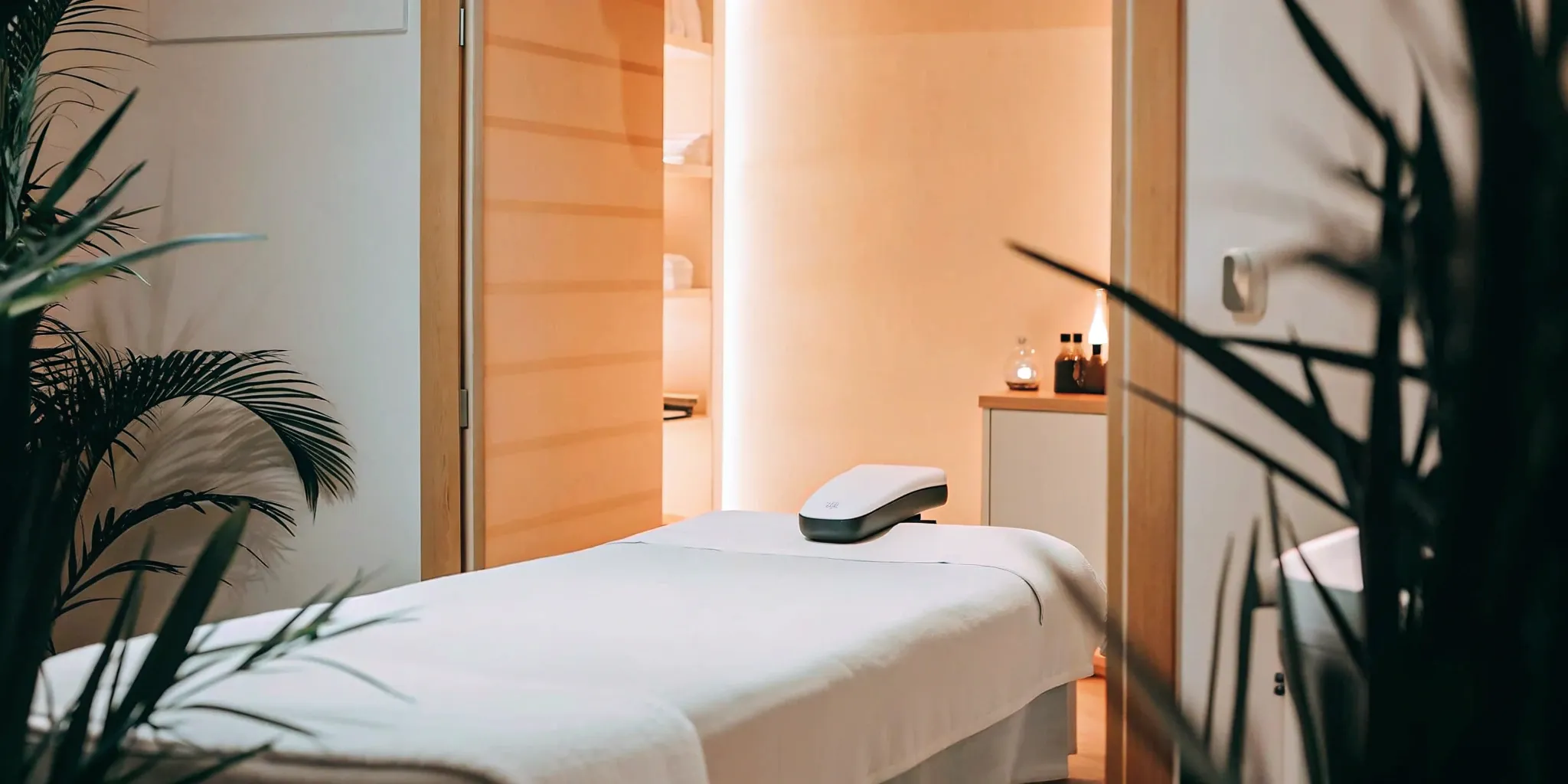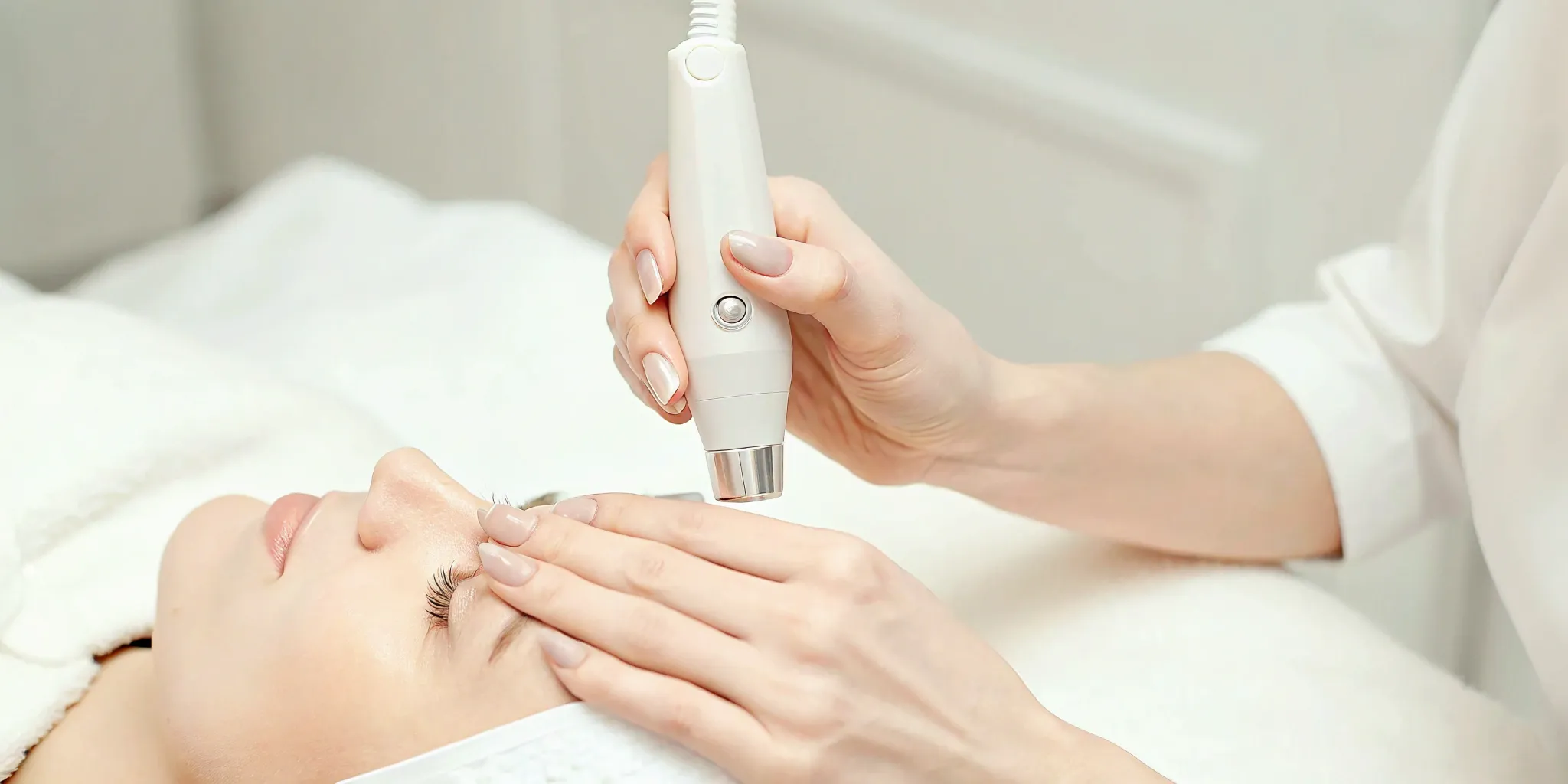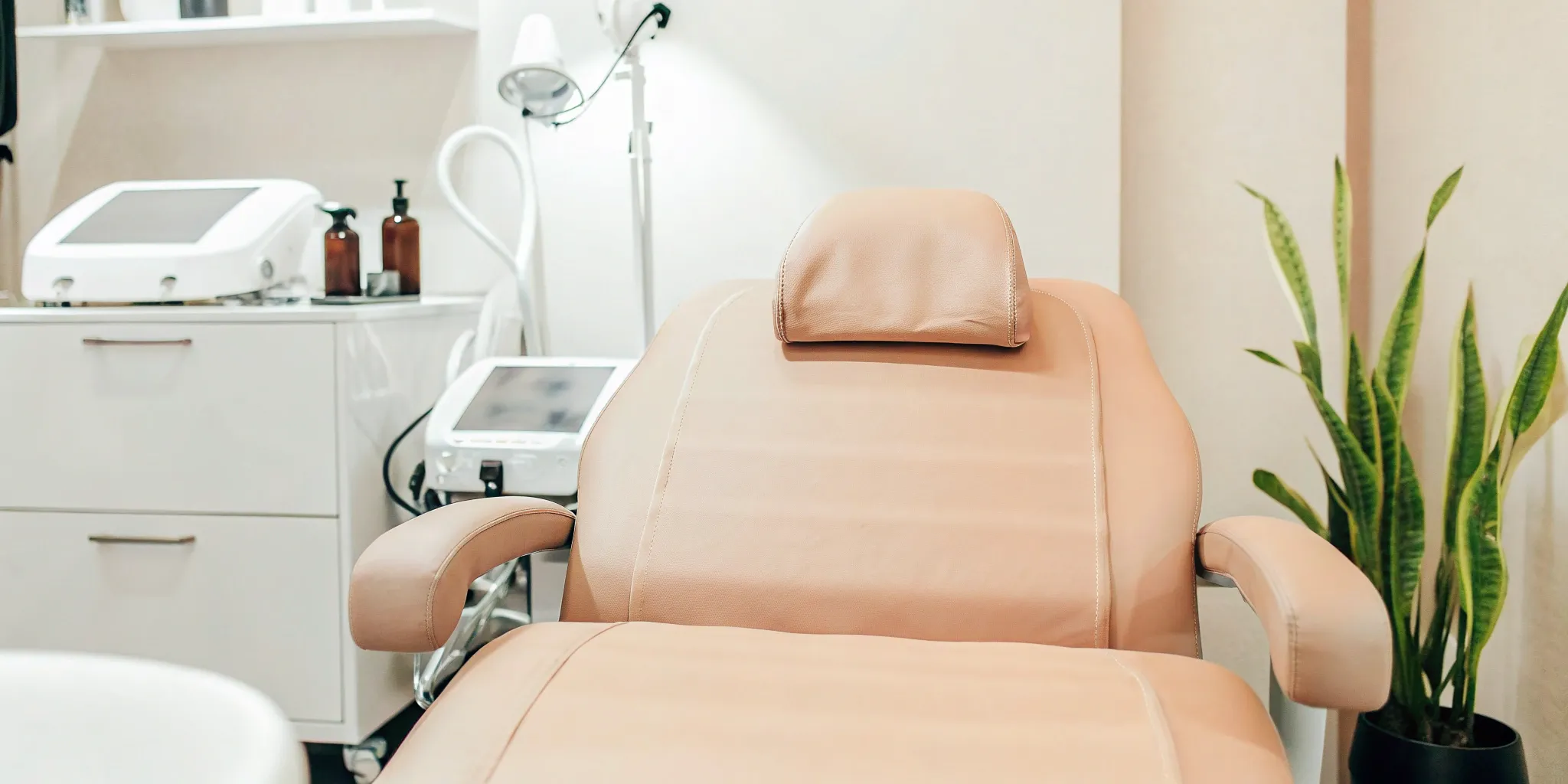That tattoo you once loved might not fit your life anymore, and that’s perfectly okay. The good news is that you have options. Modern laser technology has made tattoo removal a safe and reliable process for getting a clean slate. But how does it actually work? We’ll explain the science behind how lasers target and shatter ink particles, allowing your body to naturally clear them away. We’ll also cover the entire step-by-step journey, from what happens during your first consultation to your final results. This is your comprehensive guide to the professional tat removal process.
Key Takeaways
- Laser removal works with your body, not against it: The laser’s job is to shatter the ink into tiny particles, but it’s your immune system that does the work of clearing them away. This natural process takes time, which is why multiple sessions and patience are essential.
- Your results are completely personal: Factors like the tattoo’s age, colors, and location, along with your skin tone, create a unique removal plan for every person. A professional consultation is the only way to get a realistic timeline for your specific tattoo.
- Your provider and aftercare are as important as the laser: Choosing a certified professional with modern technology is crucial for safety and effectiveness. Just as important is your commitment to the aftercare plan, especially protecting your skin from the sun, to ensure proper healing and the best outcome.
How Does Tattoo Removal Actually Work?
If you’re thinking about tattoo removal, your first question is probably, “How does this even work?” It can seem like magic, but it’s pure science. The methods for removing tattoos have evolved dramatically over the years, moving from harsh, invasive procedures to the highly precise laser technology we use today. Understanding the process is the first step toward feeling confident in your decision to start fresh.
The goal is to break down the ink particles trapped in your skin so your body can naturally clear them away. Modern lasers are incredibly effective at this, targeting the tattoo ink while leaving the surrounding skin untouched. This is why choosing a professional, medically supervised environment is so important for your safety and results. At-home removal kits or creams are not only ineffective but can also be dangerous, often leading to scarring or skin damage. Trusting an expert ensures you’re using the safest, most effective methods available.
Tattoo Removal: Then and Now
Tattoo removal has come a long way. In the past, options were pretty limited and often involved abrasive or surgical methods that could leave significant scars. Thankfully, we’ve moved far beyond those days. The gold standard for removal is now laser technology, a method that has been refined over decades to become safer and more effective than ever. Instead of physically scraping away layers of skin, modern treatments use focused light to erase ink from the inside out. This shift represents a huge leap forward, making tattoo removal a much more accessible and reliable option for people ready for a change.
The Science Behind Laser Removal
So, what’s happening during a laser session? Think of the tattoo ink in your skin as tiny, solid rocks. They’re too large for your body’s natural cleanup crew—your immune system—to carry away. A specialized laser for tattoo removal sends ultra-fast pulses of light energy into your skin. This energy is absorbed by the ink particles, causing them to heat up and shatter into much smaller, sand-like pieces. Once the ink is broken down, your immune system can finally step in, recognize these tiny particles as foreign objects, and flush them out of your body over the following weeks. This is why multiple sessions are needed to fully clear a tattoo.
What’s New in Removal Technology?
Just as smartphones get better every year, so does tattoo removal technology. The latest advancements, like PicoWay lasers, have completely changed the game. These state-of-the-art lasers use incredibly short and powerful pulses of energy, measured in picoseconds (that’s a trillionth of a second!). This “pico” speed is more effective at shattering ink particles, especially stubborn colors like blues and greens, with less heat. For you, this translates to a better experience all around: potentially fewer sessions, greater comfort during treatment, and a lower risk of side effects. Using advanced technology is a key part of providing safe and effective aesthetic services.
What Affects Your Tattoo Removal Results?
If you’re thinking about saying goodbye to some old ink, you might be wondering what the process actually looks like for you. The truth is, laser tattoo removal isn’t a one-size-fits-all solution. The journey is unique for every person and every tattoo, and several key factors play a big role in how quickly and effectively your ink fades. Think of it less like an eraser and more like a gradual fading process that we guide you through.
From the colors used in your design to where it’s located on your body, each detail helps us create a personalized treatment plan. Understanding these variables from the start helps set clear expectations, so you know what to anticipate before your first session. It’s all about working with your body’s natural processes to clear the ink away. Let’s walk through the main factors that will influence your results, so you can feel confident and prepared for the road ahead.
Does Ink Color and Age Matter?
Yes, absolutely. Different ink colors absorb different wavelengths of light, which means your technician will need to adjust the laser accordingly. As a general rule, dark inks like black and dark blue are the easiest to treat because they absorb all laser wavelengths. On the other hand, brighter colors can be more stubborn. According to the FDA, greens, reds, and yellows are often the most challenging to remove. The age of your tattoo can also be a factor. Older tattoos have often faded naturally over time, which can sometimes give the removal process a head start compared to a fresh, vibrant piece.
How Skin Tone and Placement Play a Role
Your skin tone is another important piece of the puzzle. The laser works by targeting the pigment in the tattoo ink. When there’s a clear contrast between your skin and the ink (like dark ink on fair skin), the laser can target the pigment more easily. For darker skin tones, we use specialized laser settings to target the ink without affecting the surrounding skin. The tattoo’s location also matters. Areas with strong blood circulation, like your torso or neck, tend to heal faster, allowing your body to flush out the ink particles more efficiently. Tattoos on your hands, feet, or ankles may fade more slowly due to lower circulation.
Professional vs. Amateur Ink: Is There a Difference?
The quality of the original tattoo can significantly impact the removal process. Professional tattoos are typically done with a machine that places the ink evenly and deeply into the dermis—the second layer of your skin. This consistency means the removal process is often more predictable. Amateur tattoos, on the other hand, can have varying ink depths and types, which might require a more customized approach. While a professional tattoo might contain more ink and be more saturated, an experienced technician can create a plan to effectively break it down layer by layer.
Why Size and Density Are Key Factors
It makes sense that a tiny heart on your wrist will be easier to remove than a full sleeve. The overall size of the tattoo and the density of the ink are major factors in determining your treatment timeline. Larger, darker, and more saturated tattoos simply contain more ink for the laser to break down. This is why the Cleveland Clinic notes that most people need between 6 to 12 sessions, or sometimes more. Each session shatters a layer of ink, and your body needs time in between appointments to heal and clear those particles away. A personalized consultation is the best way to get an accurate estimate of how many sessions your specific tattoo will require.
Your Tattoo Removal Process: Step-by-Step
Thinking about removing a tattoo can feel like a huge step, but understanding the process can make it feel much more manageable. From your first chat with a specialist to the day of your treatment, knowing what’s ahead helps you prepare and feel confident in your decision. We’ll walk you through each stage so you know exactly what to expect on your journey to clear skin. It’s a process that requires patience, but with the right team and technology, you can achieve the results you’re looking for.
What to Expect at Your First Consultation
Your first step is a one-on-one consultation. This is your chance to sit down with a professional who can assess your tattoo and explain your options. During this meeting, we’ll look at your tattoo’s size, ink colors, age, and location on your body. We’ll also discuss your skin type and medical history to make sure you’re a good candidate for the procedure. This is the perfect time to ask all your questions and share your goals. Based on this conversation, we’ll create a personalized treatment plan just for you. Ready to get started? You can schedule a consultation with our team to begin the conversation.
How Many Sessions Will You Need?
One of the most common questions is, “How long will this take?” The truth is, tattoo removal is a marathon, not a sprint. Most people need between six and twelve sessions, sometimes more, to see the best results. Tattoo ink is layered deep within your skin, and each laser treatment breaks down one layer at a time. Your body’s immune system then works to flush away these tiny ink particles. Spacing sessions several weeks apart gives your skin the time it needs to heal and your body time to do its job. The exact number of laser tattoo removal sessions you’ll need will depend on the factors we discussed in your consultation.
Let’s Talk About Pain: Your Management Options
Let’s be upfront about comfort. Many people describe the sensation of laser tattoo removal as similar to a rubber band snapping against the skin. While it can be uncomfortable, it’s usually very quick. Your comfort is our priority, and we have several ways to manage any pain. We can apply a topical numbing cream before the procedure to dull the sensation. For more sensitive areas, other options may be available. We will discuss all of these with you beforehand to ensure your experience is as comfortable as possible. You’re in control, and we’ll work together to find the best approach for you.
A Look at Your Treatment Day
On the day of your appointment, we’ll start by thoroughly cleaning the treatment area. If you opted for a numbing cream, we’ll apply that first and give it time to take effect. During the treatment, you’ll be given protective eyewear, and then our specialist will use a handheld laser device to pass over your tattoo. The laser sends short pulses of light energy to break up the ink. The treatment itself is surprisingly fast—often lasting just a few minutes for smaller tattoos. Afterward, it’s normal to see some redness, swelling, or even minor blistering. This is a sign that your body is starting the healing process. We’ll apply a soothing ointment and bandage before sending you home with detailed aftercare instructions.
Your Aftercare and Recovery Plan
Think of your aftercare as the most important part of your treatment. How you care for your skin between sessions directly impacts your healing, comfort, and final results. Following a solid plan helps your skin recover properly and prepares it for the next appointment. While the laser does the heavy lifting, your diligence at home is what ensures the process goes smoothly. We’ll walk you through exactly what to do—and what to avoid—to get the best outcome from your laser tattoo removal journey.
Immediately After Your Session
Once you leave our office, your job is to keep the treated area calm and protected. For the first few hours, gently apply an ice pack to reduce any swelling or discomfort. We’ll provide you with an antibiotic ointment to apply, which helps prevent infection. Cover the area with a sterile bandage and keep it clean and dry. It’s tempting, but avoid scrubbing or picking at the skin, as this can lead to scarring. Your skin is working hard to heal, so treat it gently and give it the support it needs to recover effectively.
The Healing Process: Week by Week
Patience is key when it comes to tattoo removal. The healing process looks different for everyone, but you can expect some common stages. In the first few days, you might see redness, swelling, and even some blistering—this is a normal part of the process. As the weeks go on, the initial side effects will fade, and you’ll begin to notice the ink breaking up. Complete removal is a gradual journey, often requiring multiple sessions spaced several weeks apart. Trust the process and know that each session is another step toward clear skin.
Products and Activities to Skip
To help your skin heal beautifully, you’ll need to press pause on a few things. For the first 48 hours, avoid hot tubs, saunas, and long, hot showers, as heat can increase swelling. It’s also best to skip any strenuous exercise for at least 24 hours. Most importantly, protect the treated area from the sun. UV exposure can cause pigmentation changes and interfere with healing. Always apply a high-quality mineral sunscreen with an SPF of 50 or higher if the area will be exposed. If you have any questions about your specific routine, you can always contact us for guidance.
How to Manage Common Side Effects
It’s completely normal to experience some side effects as your skin heals. Redness, tenderness, and swelling are common and usually subside within a few days. Blistering can also occur, which is a sign that your body is healing and pushing the ink particles out. Do not pop them! Let them heal on their own. While rare, infection is a risk. If you notice prolonged redness, intense itching, pus, or develop a fever, it’s important to seek medical attention right away. Most side effects are temporary and a standard part of the body’s natural healing response.
Safety, Risks, and Realistic Results
Making an informed decision about tattoo removal means understanding the full picture—the good, the potential challenges, and the likely outcome. While laser tattoo removal is a safe and effective procedure for most people, it’s important to go in with clear, realistic expectations. Knowing what can happen during and after the process helps you prepare and ensures you feel confident every step of the way. Let’s walk through the potential side effects, risks, and what you can realistically expect your skin to look like when it’s all said and done.
A Quick Look at Potential Side Effects
It’s completely normal to see some changes in your skin right after a laser session. Think of it as your body’s natural response to the treatment. Most side effects are temporary and a sign that the healing process has begun. You might experience some redness, soreness, or swelling around the treated area. Small bleeding spots or blisters can also occur, but these typically resolve on their own within a few days to a week. Some people also notice temporary lightening or darkening of the skin, which usually evens out over time. These are all common parts of the laser tattoo removal journey.
Are There Any Serious Risks to Consider?
While serious complications are rare, they are possible. The most significant risks include infection and scarring. An infection can happen if the treated area isn’t kept clean and properly cared for after your session. Scarring is also a possibility, though it’s much less likely with today’s advanced laser technology than with older methods. The best way to minimize these risks is to choose a reputable provider with experienced, certified technicians. Following your aftercare instructions to the letter is just as crucial for ensuring your skin heals beautifully and without complications.
What Will the Final Result Look Like?
The goal of laser tattoo removal is to fade the tattoo as much as possible, but it’s important to know that 100% clearance isn’t always achievable. The final result depends on many factors, including the tattoo’s colors, age, and depth. It’s common for some faint traces of ink or slight changes in skin texture or color to remain after your final session. Think of it less as an eraser and more as a significant fading process. Our goal is to restore your skin to a point where the tattoo is no longer a noticeable feature, leaving you with a clean slate.
Setting Achievable Expectations for Your Removal
Patience is key when it comes to tattoo removal. This isn’t a one-and-done treatment; it’s a process that requires commitment. Most clients need between 6 and 10 sessions, with about 6 to 8 weeks of healing time between each appointment. This allows your skin to recover and your body to flush out the shattered ink particles. Some ink colors are more stubborn than others, and very dense or deep tattoos can be challenging to remove completely. The best way to understand your specific outcome is to schedule a consultation, where we can assess your tattoo and create a personalized treatment plan.
How to Choose the Right Provider
Deciding to remove a tattoo is a big step, and choosing the right person to do it is just as important. The provider you select will directly impact your safety, comfort, and the quality of your results. This isn’t the time to bargain hunt; it’s the time to prioritize expertise. A great provider will be your partner through the entire process, from the initial consultation to your final aftercare instructions. They should make you feel confident and informed every step of the way.
Finding a qualified professional ensures you’re using safe, effective technology and minimizing any potential risks. Let’s walk through exactly what you should look for and the questions you need to ask to find a provider you can trust with your skin.
Look for These Credentials and Certifications
Tattoo removal is a medical procedure, so you should always seek treatment from a trained professional in a clinical setting. Look for a reputable medical spa or a dermatologist’s office that specializes in laser tattoo removal. The technicians performing the procedure should be certified and have extensive experience with the specific laser technology they use.
Don’t hesitate to ask about their training and how many removal procedures they’ve performed. A trustworthy provider will be transparent about their qualifications and happy to show you their credentials. They should operate under the supervision of a medical director, which ensures a high standard of care and safety for all their services.
Key Questions to Ask During Your Consultation
Your consultation is your opportunity to interview a potential provider and make sure they’re the right fit. Come prepared with a list of questions to get a clear picture of what to expect. This is your chance to discuss the procedure, its benefits, and any potential risks.
Here are a few essential questions to ask:
- What type of laser technology do you use, and why is it right for my tattoo?
- Based on my tattoo’s size, ink color, and age, how many sessions do you estimate I will need?
- Can I see before-and-after photos of your clients with similar skin tones and tattoos?
- What are the potential side effects, and how do you manage them?
- What does the aftercare process involve?
A great provider will answer your questions thoroughly and set realistic expectations. If you feel rushed or dismissed, that’s a sign to keep looking. Ready to ask your questions? You can always schedule a consultation with our team.
Breaking Down the Cost of Treatment
The cost of tattoo removal is an investment in your skin, and it varies significantly from person to person. There’s no one-size-fits-all price because the total cost depends on several factors, including the tattoo’s size, color, location, and density of the ink. Most clinics charge per session, with prices often ranging from $150 to over $500 for each treatment.
While it might be tempting to go with the cheapest option, this is one area where you get what you pay for. A lower price could indicate outdated technology or an inexperienced technician, which can lead to poor results or skin damage. Instead, focus on the value and expertise the provider offers. A detailed quote during your consultation will give you a clear understanding of the expected financial commitment.
Understanding Your Payment Options
Once you have a cost estimate, ask about the payment process. Most providers require payment at the time of each session. However, many clinics offer packages that can reduce the overall cost if you purchase multiple sessions upfront. This can be a great way to save money if you’re committed to completing the full removal process.
Some medical spas also partner with financing companies to offer flexible payment plans, allowing you to break down the total cost into manageable monthly installments. Be sure to ask about all available options during your consultation. This allows you to find a plan that fits your budget, so you can focus on achieving clear, tattoo-free skin without financial stress.
How to Prepare for Your Treatment
Getting ready for your tattoo removal journey is just as important as the treatment itself. A little preparation goes a long way in ensuring you have a smooth experience and achieve the best possible results. Think of it as setting the stage for success. By taking a few key steps before, during, and after your appointments, you can support your skin’s healing process and feel confident from your first consultation to your final session. Here’s a simple guide to help you get ready.
Your Pre-Treatment Checklist
The first and most important step is to have a thorough conversation with a professional. During a consultation, you can discuss the entire laser procedure, what to expect, and any potential risks involved. This is your time to ask every question you have—don’t be shy! A great provider will walk you through the process, assess your tattoo and skin type, and create a personalized treatment plan. This initial chat ensures you’re fully informed and comfortable before moving forward. Ready to start the conversation? You can schedule a consultation to get all your questions answered.
What to Do Before Your Appointment
Once you’ve booked your first session, there are a few things you can do to prepare your skin. For at least two weeks before your appointment, try to avoid direct sun exposure, tanning beds, and spray tans on the treatment area. Sun exposure can make your skin more sensitive and increase the risk of side effects. You should also avoid any skincare products with harsh ingredients like retinoids or exfoliants on the area. On the day of your treatment, make sure the skin is clean and free of any lotions, oils, or fragrances. A little prep helps ensure the laser can do its job effectively.
Planning for a Smooth Recovery
Your aftercare routine is crucial for getting great results and preventing complications. Your technician will give you specific instructions, and it’s so important to follow them carefully. Generally, this involves keeping the treated area clean and dry. You’ll want to gently wash it with a mild, fragrance-free soap and apply a recommended ointment to keep it moisturized. Protecting your skin from the sun is also non-negotiable. Always apply a high-SPF mineral sunscreen to the area. Proper aftercare is your best tool for promoting healing and making your laser tattoo removal a success.
Your Follow-Up Appointment Schedule
Patience is a key part of the tattoo removal process. It’s not a one-and-done treatment; laser removal requires multiple sessions spaced several weeks apart. Most people need between 6 to 12 sessions, sometimes more, because the ink is settled in layers within the skin. According to the Cleveland Clinic, this spacing gives your body the time it needs to break down the ink particles and for your skin to heal completely between appointments. Understanding this timeline from the start helps you set realistic expectations and commit to seeing the process through to the end.
What Are Your Other Options?
While laser tattoo removal is the gold standard, it’s not your only choice. Exploring the alternatives can help you find the perfect solution for your goals, whether you want to transform your ink or just hide it for a day. From creative cover-ups to new technologies on the horizon, here’s a look at your other options.
Is a Cover-Up Tattoo Right for You?
A cover-up tattoo can be a great option if you want to transform an unwanted tattoo into something new and meaningful. This method involves working with a talented artist to tattoo a new design over the existing one, often using darker colors or a larger size to effectively mask the original. For the best results, you can even lighten the old tattoo with a few laser tattoo removal sessions beforehand. This gives your artist a cleaner canvas to work with, opening up more possibilities for your new art.
Temporary Ways to Hide Your Tattoo
For a non-permanent solution, high-coverage cosmetics are your best friend. If you need to conceal a tattoo for a special occasion or a professional setting, there are fantastic products available, like tattoo cover-up creams and full-coverage body makeup. These are designed to be opaque and long-lasting, so you don’t have to worry about smudging. It’s a simple, effective way to temporarily hide your tattoo whenever you need to, without any commitment.
Beyond Lasers: New Removal Methods on the Horizon
The world of aesthetics is always advancing, and you might see new, non-laser removal methods or creams advertised online. While innovation is exciting, it’s wise to approach these with caution, as many are still in early development and lack the proven safety and effectiveness of laser technology. At Ultimate Image MedSpa, we are committed to providing services that are backed by science and deliver consistent, reliable results. We always stay informed about new advancements to ensure we’re offering the very best, most trusted treatments to our clients.
Related Articles
- Laser Tattoo Removal | Everything You Need to Know
- Laser Tattoo Removal | Everything You Need to Know
Frequently Asked Questions
Will my tattoo be 100% gone after treatment? The goal of laser removal is to fade the tattoo until it’s no longer a noticeable feature on your skin. While many tattoos can be cleared almost completely, it’s best to think of the process as a significant fading rather than a perfect erasure. Factors like the colors and depth of the ink mean that sometimes a faint trace or a slight change in skin texture may remain. We focus on setting realistic goals to get you the best possible outcome.
Why do I need so many sessions spaced so far apart? Tattoo removal is a team effort between the laser and your body. The laser’s job is to shatter the large ink particles into tiny pieces. After that, your body’s immune system takes over to naturally flush those particles away. This cleanup process takes time, and your skin also needs to heal completely. Spacing treatments several weeks apart ensures your body has enough time to do its work, making each session safe and effective.
Is laser removal safe for darker skin tones? Yes, laser tattoo removal can be very safe and effective for darker skin tones, but only when performed by an experienced professional using the right technology. Advanced lasers have specific settings that can target the tattoo ink without affecting the natural melanin in the surrounding skin. This precision is key to preventing pigmentation changes, which is why choosing a qualified provider is so important.
What’s more important: the laser technology or the person operating it? They are equally important. You can’t have one without the other for great results. State-of-the-art technology provides the power and precision needed to break down ink effectively. However, that tool is only as good as the certified technician using it. An expert knows exactly how to customize the treatment for your specific tattoo and skin type, ensuring your safety and maximizing the effectiveness of every session.
Besides the laser, what’s the most critical part of the removal process? Your aftercare routine is, without a doubt, the most crucial part of your success. How you care for your skin between appointments directly impacts your healing and final results. Following the aftercare instructions, especially keeping the area clean and protected from the sun, is your best defense against infection or scarring. It ensures your skin recovers properly and is ready for the next treatment.


